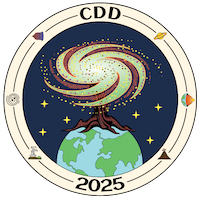Orateur
Description
Modelling SEP and GCR Atmospherics showers with Monte Carlo Simulations
Keywords: Atmospheric modelling, Radiation monitoring, High Energy physics, Monte Carlo Methods
With the growing use of integrated electronics, the impact of natural atmospheric radiations is becoming a prominent concern for both space, where the environment is more severe, and atmospheric applications (i.e. aeronautics and surface level), where natural shielding is higher, but more systems are exposed. The radiative environment is also subject to local variations like the Van Allen belts shown in Fig. 1, where high energy protons and electrons are trapped. Moreover, discrete space weather events can momentarily increase particle flux and energy in orbit. As for the atmospheric environment, complex interactions between Solar Energetic Particles or Galactic Cosmic Rays with the magnetosphere and atmosphere of the Earth can create large scale atmospheric showers, eventually reaching commercial flight levels or even the ground itself.
Because of the physical scale and complexity of such phenomena, we developed a large scale Monte Carlo simulation using the Geant4 C++ toolkit. This simulation computes the propagation of high energy particles within the magnetosphere and the atmosphere, from the exobase down to the surface level, as well as interactions with the ground and the resulting albedo emission.
In this presentation, we will discuss SEP and GCR models, the impact of radiations on electronics systems, as well as the Monte Carlo simulation code methodology and first results.
| Speaker information | PhD 2nd year |
|---|

